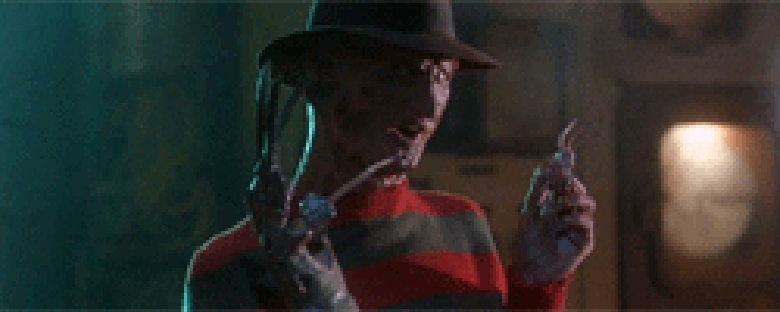Reviews
Rachel Talalay
USA, 1991
Credits
Review by Adam Balz
Posted on 30 October 2006
Source New Line DVD
Related articles
Features: 31 Days of Horror
Features: Neverending Nightmares: A Retrospective of Friday the 13th and A Nightmare on Elm Street
Every town has an Elm Street
—Freddy Krueger
When an amnesiac teen known only as John Doe arrives at a youth rehabilitation center, sleepless for days and carrying a news article from Springwood, Ohio, he becomes counselor Maggie Burroughs’ fixation. Hoping to trigger a surge of memories, she drives him to Springwood against his wishes, and with three stowaways in the back: Tracy, a passionate boxer who is escaping her sexually abusive father; Carlos, who was made deaf by his domineering mother; and Spencer, a cynical drug addict. When they arrive in Springwood, they find a suburban wasteland. Every child has been murdered by Freddy Krueger, and the adults live in unyielding states of psychosis. And Krueger, having no victims left to torment, decides to use Maggie as his way out.
Writer-director Rachel Talalay, rather than making a genuine film, has created a gimmick infused with minimal plot, bleak cinematography, and the indulgences of its creators. Any promise of tension and gravity is instantly and indifferently washed away by an opening throw-back to The Wizard of Oz and the overuse of Mussorgski’s “Night on Bald Mountain.” Add to that a slew of bizarre cameo appearances—Roseanne and Tom Arnold as childless Springwood parents, Elinor Donahue as a delusional orphanage manager, Johnny Depp as a teen in an anti-drug advertisement—and a scene in which Freddy plays Nintendo as part of obvious in-movie sponsorship, and Talalay’s film quickly begins to sink. By the end, when we’re instructed visually to put on our 3D glasses, the film—and, in fact, the entire franchise—dies instantly.
Perhaps the only redeeming quality of Talalay’s film outside of its stunning visuals is the redirection of Krueger’s means of torture. No doubt Krueger’s popularity with audiences persisted through numerous sequels due to his ever-increasing creativity in disposing of his prey. But unlike those first few Nightmare films, in which teenagers are subjected to unspeakable horrors—cutting, dissection, disembowelment—the victims of Freddy’s Dead are forced back into the past, where the horrors of their wretched upbringings are replayed. Carlos comes face to face with his mother, who forces a ten-inch swab through his ear canal; likewise, Tracy is transported back to her childhood home, a dirty apartment, where she must once again fend off advances from her father, eventually shaping his face with a coffee pot.
Talalay, however, makes one fundamental mistake. By delving into the history of Freddy Krueger, from his miserable schooldays to his violent drunkard father (an easily forgettable Alice Cooper in yet another wasted cameo), she makes an obvious, if not unintentional connection between Krueger and his newest victims. We sympathize with Carlos and Tracy because we’ve seen their lives, their appalling households, but shouldn’t we then also sympathize with Krueger? Carlos didn’t choose to have a brutal mother and Tracy didn’t chose to have a depraved father, just as Krueger didn’t chose to be the son of “100 maniacs.” Talalay leaves this subplot open for every form of interpretation—is this a case of nature versus nurture, repression, objectification?—but no matter how you feel about Krueger, it becomes painfully evident that our esteemed director is accusing society of creating him. This sweater-clad, glove-wielding monster was made, and we are deserving of the punishment he inflicts on us.
We don’t do comments anymore, but you may contact us here or find us on Twitter or Facebook.



